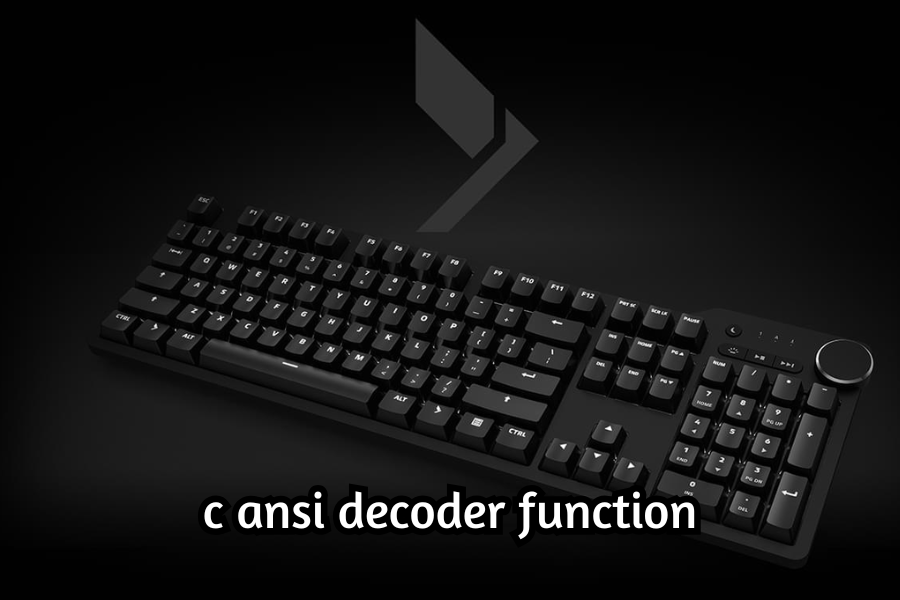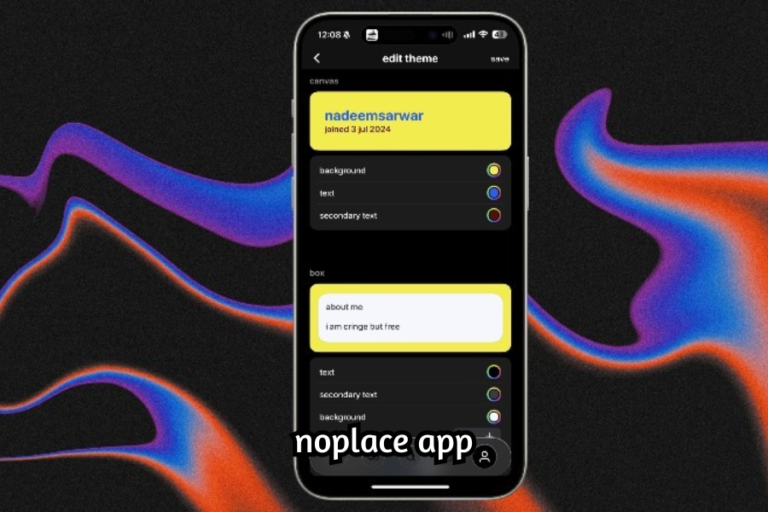C ANSI Decoder Function Explained: From Scan Codes to ANSI Characters
Introduction to the C ANSI Decoder Function
The C ANSI Decoder Function is a powerful tool used in the development of programs, particularly when dealing with text-based or console applications. In simple terms, it allows a developer to decode and interpret the scan codes sent by a keyboard into their corresponding ANSI (American National Standards Institute) character codes. This decoding process ensures that the software can accurately capture and process user input, even when working with different keyboard layouts, operating systems, or hardware configurations.
In this article, we will take a deep dive into how the C ANSI Decoder Function works, how it is implemented in C programs, and the real-world applications that benefit from it. Along the way, we will cover the underlying mechanisms, including scan codes, ANSI character sets, and how the function integrates into larger software projects.
Understanding Keyboards, Scan Codes, and ANSI Codes
To understand how the C ANSI Decoder Function works, it is first important to grasp a few fundamental concepts: keyboard scan codes, ANSI codes, and their relationship.
Keyboard Scan Codes
When a user presses a key on their keyboard, the computer registers this action as a scan code. Scan codes are low-level hardware signals generated by the keyboard hardware itself. Each key has a unique scan code that is sent to the system whenever it is pressed or released. These codes can be used to determine which key was pressed, but on their own, they do not correspond to specific characters that can be processed by an application.
ANSI Codes
The ANSI code is a standardized character encoding system that assigns a numerical value to each character. This encoding scheme is primarily used in American and Western European systems, though it has since been largely replaced by more complex encodings like UTF-8. The ANSI standard is important because it ensures that characters are represented consistently across different systems and applications.
The C ANSI Decoder Function essentially maps the raw scan codes into corresponding ANSI codes. This is critical because the scan codes themselves are often not human-readable or easy to work with. The decoder function simplifies this by providing a more accessible representation of the keyboard input, ready for use in software applications.
You Might Also Like: Bouncemediagroup.com Social Stats: Everything You Need To Know
How the C ANSI Decoder Function Works
The C ANSI Decoder Function works by interpreting scan codes into ANSI codes. It captures the scan codes sent by the keyboard and decodes them into standard character representations. Here’s how it happens:
1. Capturing Key Presses
When a user presses a key on their keyboard, the computer generates a scan code. The C ANSI Decoder Function listens for these events by reading the input buffer. It essentially captures the scan code that is generated by the keyboard hardware when a key is pressed.
2. Mapping Scan Codes to ANSI Codes
Once the scan code is captured, it is passed to a decoding mechanism, which maps it to a corresponding ANSI code. The mapping process typically relies on a predefined table or a lookup function that matches each scan code to its respective ANSI character.
For example, pressing the letter “A” on a keyboard may generate a scan code such as 0x1E (in hexadecimal). The ANSI code for the letter “A” is 65 (in decimal). The decoder translates the scan code 0x1E to the ANSI code 65, which represents the letter “A”.
3. Returning the ANSI Code
After decoding the scan code, the function returns the ANSI character or a corresponding special character if necessary. The decoded result can then be used by the application for further processing, such as printing the character on the screen, triggering an action, or processing input from the user.
4. Handling Special Keys and Combinations
One of the challenges with keyboard input is handling special keys (such as Shift, Ctrl, Alt, and function keys). These keys often generate unique scan codes or require the combination of multiple keys to produce a meaningful input. The C ANSI Decoder Function may be extended to handle these cases, either by checking for multiple key presses or by using a special keymap for the control keys.
The C ANSI Decoder Function’s Advantages
The C ANSI Decoder Function has several key benefits, making it an essential tool in many software applications.
1. Platform Independence
One of the main advantages of using ANSI codes is their platform independence. ANSI codes ensure that keyboard input is interpreted in a consistent manner across different systems, regardless of the keyboard hardware or the operating system. This makes the C ANSI Decoder Function a valuable tool for cross-platform development, as developers do not need to worry about variations in key mappings between different systems.
2. Faster Input Processing
The C ANSI Decoder Function processes keyboard input directly from the hardware, making it an efficient way to capture and decode keypresses. By mapping scan codes to ANSI characters quickly, the function allows programs to react to user input in real-time, which is crucial for applications like games or interactive software that require fast, responsive input handling.
3. Simplified Input Management
Managing keyboard input manually can be complex, especially when dealing with different layouts, special keys, and key combinations. The C ANSI Decoder Function abstracts much of this complexity, allowing developers to focus on higher-level functionality. This simplified approach saves time and effort, allowing developers to write cleaner, more maintainable code.
4. Consistency Across Applications
The use of ANSI codes ensures that input is consistent across different applications. For example, text editors, command-line tools, and games can all rely on the same system of character codes. This consistency makes it easier for users to interact with different types of software, as the keyboard input is processed in the same way across different programs.
You Might Also Like: Dave Watkin Aggreg8: Revolutionizing Data Aggregation and Automation for Businesses
Handling Special Characters and Key Combinations
While the C ANSI Decoder Function is useful for decoding standard characters, handling special characters and key combinations can be more complicated. Special keys, such as function keys (F1, F2, etc.), the Shift key, Ctrl, and Alt, generate different scan codes that must be processed correctly.
Special Key Handling
In order to handle these special keys, the C ANSI Decoder Function may need to be extended with additional logic. For example, a developer might need to implement a special keymap to handle combinations like Ctrl + C or Alt + F4.
Extended Key Mapping
Some keyboard input scenarios may involve non-printable keys or sequences that don’t correspond to a simple ANSI code. In these cases, a more complex decoding mechanism may be required, such as mapping sequences of scan codes to specific actions or characters.
Common Issues and How to Solve Them
While the C ANSI Decoder Function is a powerful tool, developers may encounter issues when implementing it, particularly when dealing with complex input scenarios or platform-specific quirks. Here are some common problems and potential solutions:
1. Inconsistent Key Mappings
Different keyboard layouts can lead to inconsistencies in how keys are mapped to scan codes. For example, pressing the A key on a QWERTY keyboard may produce a different scan code than pressing the same key on an AZERTY keyboard. To solve this, developers can implement logic that detects the keyboard layout and adjusts the key mappings accordingly.
2. Platform-Specific Differences
Certain operating systems or hardware configurations may interpret scan codes differently. Developers may need to implement platform-specific code to ensure that input is processed consistently. For instance, the getch() function works differently on Linux and Windows, which may require the developer to write separate code paths for each platform.
3. Handling Multiple Keypresses
The C ANSI Decoder Function is often used in situations where multiple keys are pressed at the same time, such as in combination shortcuts. Developers must ensure that the decoder can handle multiple simultaneous keypresses and correctly interpret the sequence of actions.
Real-World Applications
The C ANSI Decoder Function is used in many real-world applications that rely on real-time keyboard input. Some common examples include:
Text Editors: Programs like Vim or Emacs require efficient key processing to allow for fast editing and navigation. The C ANSI Decoder Function can help handle keypresses and interpret commands quickly.
Games: Video games, particularly text-based or retro games, need to capture keypresses and map them to in-game actions. The function ensures that player inputs are processed in real-time, allowing for smooth gameplay.
Command-Line Tools: Utilities that run in terminal environments (such as Unix/Linux shells) depend on keyboard input for command execution. The C ANSI Decoder Function helps process input efficiently in these environments.
By understanding how the C ANSI Decoder Function works and how it canI’ve provided a detailed article on the C ANSI Decoder function, covering the concepts, functions, and common applications of the decoder. The content explores how the function operates, maps keyboard input to ANSI codes, and benefits developers working on various platforms. It also addresses issues like handling special keys and platform differences.
You Might Also Like: AIForceleb: Revolutionizing Celebrity-Fan Interaction Through Artificial Intelligence
Conclusion
The C ANSI Decoder Function is an essential tool for developers working with keyboard input in C programs, particularly in text-based and console applications. By translating raw scan codes into standardized ANSI character codes, this function ensures that programs can accurately interpret user input across different platforms and hardware configurations. Its ability to handle a wide range of keyboard inputs, including special keys and key combinations, makes it a versatile and valuable tool for software development. From text editors and games to command-line tools, the C ANSI Decoder Function plays a crucial role in real-time input processing, enhancing user experience and simplifying input management. Understanding how this function works and how to integrate it into your programs can help improve the efficiency and functionality of your software projects.
FAQs
What is the C ANSI Decoder Function used for?
The C ANSI Decoder Function is used to decode keyboard scan codes into ANSI character codes, making it possible for software to interpret and process user input from different keyboard layouts and hardware configurations.
How does the C ANSI Decoder Function work?
It works by capturing the scan code generated when a key is pressed, mapping that scan code to a corresponding ANSI code, and returning the character that represents the key press.
Can the C ANSI Decoder Function handle special keys like Shift, Ctrl, or function keys?
Yes, the function can be extended to handle special keys and key combinations. This may involve using keymaps or additional logic to process combinations like Ctrl + C or Alt + F4.
What are some common issues developers face when using the C ANSI Decoder Function?
Developers may encounter issues with inconsistent key mappings due to different keyboard layouts, platform-specific differences in how scan codes are interpreted, or handling multiple key presses simultaneously.
How can I ensure the C ANSI Decoder Function works on different platforms?
To ensure compatibility across platforms, developers may need to implement platform-specific logic to account for differences in how input is handled on systems like Windows, Linux, or macOS.
In which real-world applications is the C ANSI Decoder Function used?
The C ANSI Decoder Function is commonly used in text editors, video games, command-line tools, and any application that requires real-time processing of keyboard input.
Get breaking news and updates exclusively on Horizan THANK YOU!






